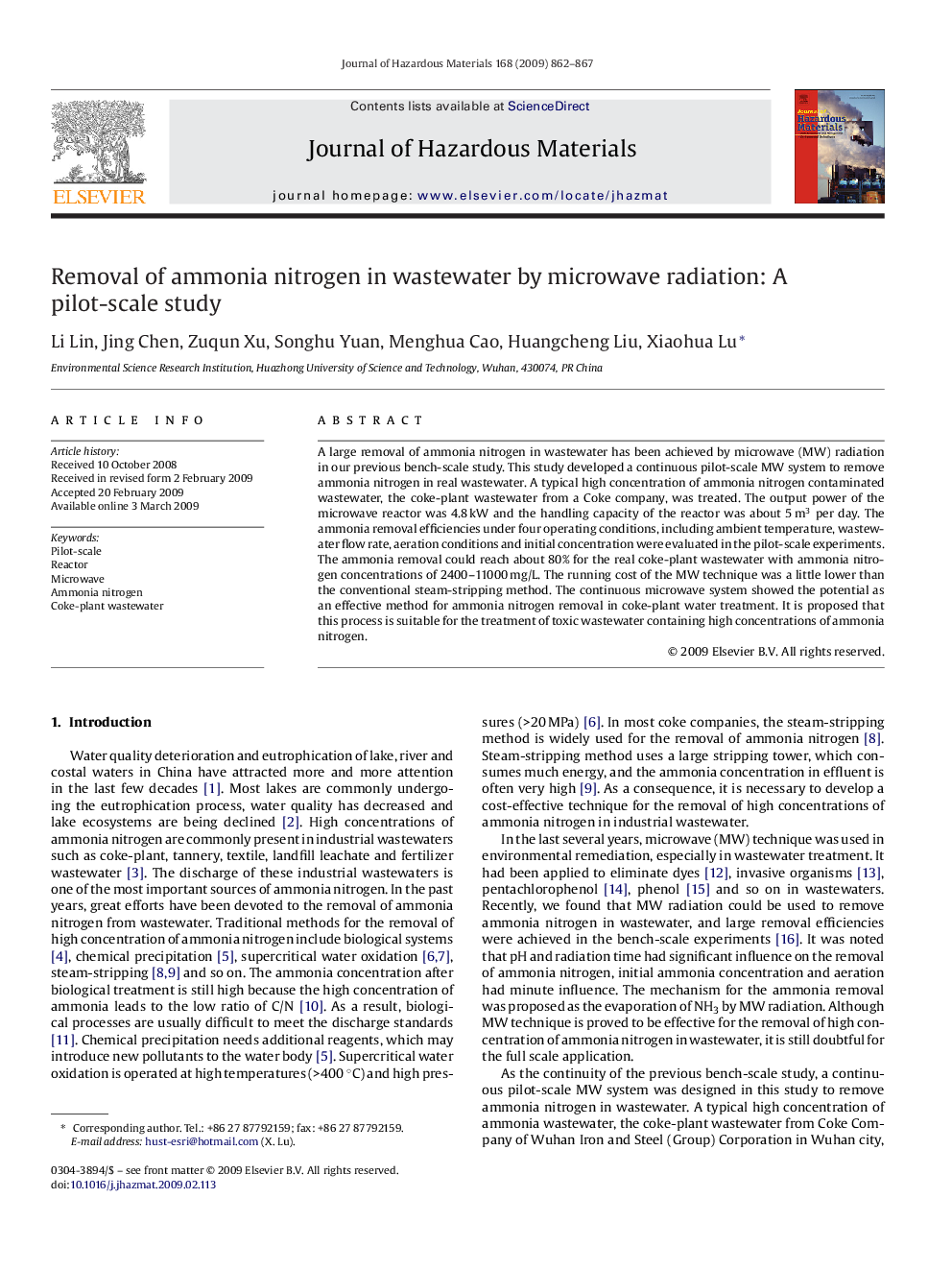| Article ID | Journal | Published Year | Pages | File Type |
|---|---|---|---|---|
| 581682 | Journal of Hazardous Materials | 2009 | 6 Pages |
Abstract
A large removal of ammonia nitrogen in wastewater has been achieved by microwave (MW) radiation in our previous bench-scale study. This study developed a continuous pilot-scale MW system to remove ammonia nitrogen in real wastewater. A typical high concentration of ammonia nitrogen contaminated wastewater, the coke-plant wastewater from a Coke company, was treated. The output power of the microwave reactor was 4.8Â kW and the handling capacity of the reactor was about 5Â m3 per day. The ammonia removal efficiencies under four operating conditions, including ambient temperature, wastewater flow rate, aeration conditions and initial concentration were evaluated in the pilot-scale experiments. The ammonia removal could reach about 80% for the real coke-plant wastewater with ammonia nitrogen concentrations of 2400-11000Â mg/L. The running cost of the MW technique was a little lower than the conventional steam-stripping method. The continuous microwave system showed the potential as an effective method for ammonia nitrogen removal in coke-plant water treatment. It is proposed that this process is suitable for the treatment of toxic wastewater containing high concentrations of ammonia nitrogen.
Related Topics
Physical Sciences and Engineering
Chemical Engineering
Chemical Health and Safety
Authors
Li Lin, Jing Chen, Zuqun Xu, Songhu Yuan, Menghua Cao, Huangcheng Liu, Xiaohua Lu,
